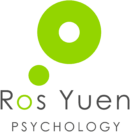First wave CBT
The first wave is essentially a Skinnerian behavioural approach to invoking changes in a person’s behavioural responses to a stimulus. Exposure therapy is a form of first wave CBT. The idea is that instead of the person avoiding the stimulus that arouses negative reactions sch as fear, shame or anger, the person will be exposed to the same stimulus in the safe environment of therapy. Eventually when the person realises that the situation is not as catastrophic as it may seem, the association between the stimulus and the reaction will subside and the intensity of the reaction decreases. Note that the goal is on change.
Second Wave CBT
Cognitive Behavioral Therapy (CBT) is arguably the one treatment modality that is closely associated with trained psychologists. What is little known is that it was born out of a disillusionment with the prevailing psychodynamic treatment of depression in the 1950s by Beck and Ellis. The former, Beck is generally regarded as the father of CBT.
Aaron Beck, an American professor of Psychiatry was interested in how patients perceive and attributed meaning to their daily lives, a mental process known as cognition. He suggested cognition as a key treatment component for depression, which he and outlined in Depression: Causes and Treatment in 1967. Beck’s treatment approach became known as cognitive therapy. Later in the 1960s, he expanded his model to the treatment of anxiety and emotional disorders. He also introduced the concept of “schema” which is the underlying ways that people process information about the self, others and the future.
At the time, psychology was dominated by behaviorism and therefore, cognitive therapy existed alongside behaviorism. Behaviorists claimed that the unquantifiable, untestable nature of cognitions made cognitive therapy “unscientific” and that the behavioral model of stimulus-behavioral response be the gold standard of psychology. However, the 1970s saw a general “cognitive” revolution and behaviour modification and cognitive therapy amalgamated giving rise to cognitive behavior therapy.
A basic principle of CBT is that how we think and feel about what happens to us impacts us as much or even more than those external events themselves. The cognitive model states that we experience everything through cognitive filters. We are more negatively affected by our automatic thoughts and patterns of thoughts about negative events. In addition, situational stressors such as stress at work can induce automatic physiological reactions, like an increase in heart rate, perspiration or blood pressure, that can be interpreted cognitively as an awareness of perceived danger when there is in reality no threat at all. Cognitive filters are schematic shorthand assumptions and expectations that we develop over years of experiences. These cognitive filters cause us to create cognitive distortions or faulty thinking which requires therapy to correct.
CBT allows psychologists to help people identify their “faulty” thinking in talk therapy. It has been shown to be very effective in the treatment of anxiety and depression and stress and today, is the main approach to treating these disorders. In the safe environment of a therapeutic relationship with a caring trained psychologist, people learn to evaluate their faulty thinking and automatic assumptions. CBT is a form of psychotherapy which utilises guided talk to explore how the person’s cognitions (thoughts, values, attitudes and beliefs) shape emotions and behavior. In addition, CBT has a simultaneous focus on how behaviour can powerfully change maladaptive thoughts. People are shown how to challenge and modify their thoughts, a process known as cognitive restructuring and to activate and try new more beneficial behaviours a process known as behavioural activation.
Beckian CBT is still the prevalent form of CBT practised and dominated the CBT field up to the late 20th century. The first and second waves shared the goal of change as the therapeutic target.
Third Wave CBT 1990 to Present
The second half of the 20th century saw the rise of neuroscience due to the discovery of powerful measurement techniques such as neuroimaging which combined with sophisticated experimental techniques from cognitive psychology enabled neuroscientists and psychologists to explore how cognition and emotion mapped to specific neural circuits.
Third wave CBT differ from second wave CBT in important ways. Firstly, all third wave therapies value contextualism, which views the human person as a part of a complete context of interconnected facets. Therefore cognitive and behavioural responses are due to the meaning given to the events by the context surrounding the experiences, not on a linear stimulus – response model
Second wave CBT aims to reduce and eliminate mental distress by changing behaviours whereas third wave CBT looks at more comprehensive life goals and adds acceptance as an important outcome of therapy. While still valuing behaviour, third wave therapists are interested in doing more than helping people change how they think and how they respond to challenging situations. Third wave CBT emphasizes accepting our thoughts within their context instead of judging our thoughts as good or bad is a prerequisite for good mental health. The role of the therapist is that of a facilitator for good mental health as opposed to a technician who only helps treat “illness” or maladaptiveness. The elimination of psychological issues is thus a highly desirable side-effect of striving for the most satisfying and mentally healthy life possible. As a renown third wave therapist summarised: “the problem arises when people feel they have the right to be happy instead of settling for contentment. Chasing happiness is a highway to hell. Don’t go there. Contented is good and good is good enough.”
Third wave CBT has added concepts like acceptance, mindfulness and metacognition (thinking about how one thinks) into its treatment portfolio. While mindfulness is a major part of contemporary CBT, it is not a new concept. Its roots are in Eastern philosophies going back for millenia.
Tibetan Buddhist teachers say that a bird needs two wings to fly, that a Buddhist practitioner must cultivate both wisdom and compassion as of equal importance for they have to be used together. Here, wisdom is not just intellectual understanding; it is diving deep into the nature of reality. Mindfulness is the pathway to wisdom. Compassion is not just sympathy; it is a heartfelt understanding of the suffering that all beings experience. Third wave CBT or contemporary CBT has added compassion based therapies such as Acceptance Commitment Therapy and Compassion Focussed Therapy as well as mindfulness to its umbrella.
Nonetheless, the 1990s witnessed a rise in mindfulness in CBT and compassion, including self-compassion is often marginalised. Today, contemporary CBT crosses over with some of the major therapies of the third wave including Mindfulness Based Cognitive Therapy (MBCT), Mindfulness Based Stress Reduction (MBSR), Acceptance and Commitment Therapy (ACT), Cognitive Behavioral Analysis System of Psychotherapy (CBASP), Compassion Focused Therapy (CFT), Dialectical Behavior Therapy (DBT), Functional Analytic Psychotherapy (FAP), Behavioral Activation (BA).
The underpinning assumption of these therapies are that people are capable of growth and change, a finding supported by neuroimaging that shows evidence of new structural brain pathways being activated by new experiences under certain conditions. Research has shown these treatments to be effective in people experiencing stress, anxiety and depression achieving better mental health and greater life satisfaction.




